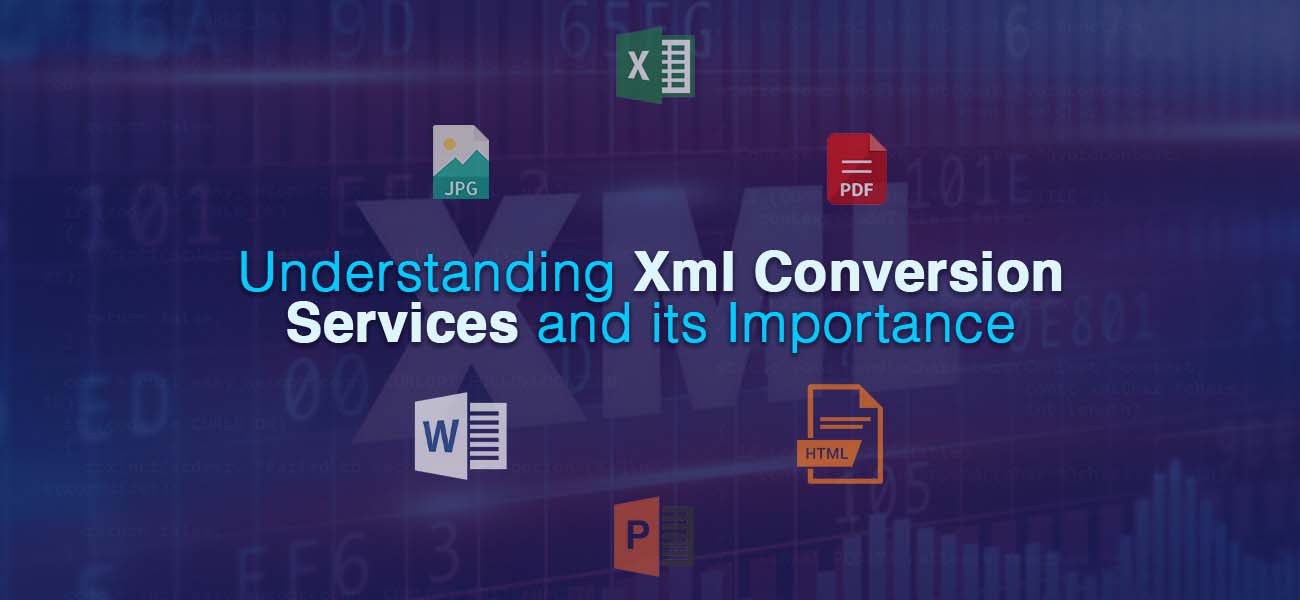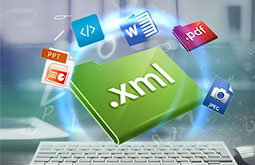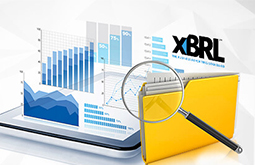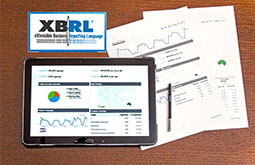XML Conversion Features: Versatile, Powerful and Adaptable
XML, which is a data conversion language, has been an industry trademark for years now due to its ability to convert information effortlessly. This is the reason why XML conversion companies are always in huge demand. XML stands for Extensible Markup Language and is a means to describe information. Specifications within the structure allow users to add markups to documents. The feature rich facilities made available within the semantic enables it to be a widely accepted format. Some of the main features which makes Extensible Markup Language a featured format are listed below.

XML Conversion Features: How Versatility and Power Enhance Data Management
-
Wide acceptance
What makes custom XML tags complete and standard is the 1.0 specification which is an industry standard promoted by World Wide Web Consortium. It is derived from Standard Generalized Markup Language. Migration and updating process during system transfer is made a whole lot easier with the advent of newer technology.
-
Custom tag definition
Ability of the semantic to define custom tags makes it Extensible. Users can define named elements as per specific requirement. HTML which is a close competitor fails on this feature because its tag semantics are fixed. The former makes it easy for markup languages by playing the role of a meta-language. Structural definitions are made within predecessor of HTML itself.
-
Data presentation content
Separate XML files are used to save contents which separates content from HTML/CSS files. Therefore modified CSS files will contain only layout and display related information. XSL style sheets make it possible to alter the display quality and layout without altering content.
-
Easy to modify content
Content modification has been made relatively easier, thanks to separate XML data which modifies content and display related information simultaneously. HTML on the other side relies heavily on manual alteration.
-
Re-usability of content
HTML acts as a web browser specific language but XML on the other side processes data irrespective of the size and resolution. It is simple, economical and easy to merge. Webpage translation and other international standards can easily be met.
-
Search efficiency and data access
Since data in Extensible Markup Language arrangement is mainly in machine-readable setup, comparison and aggregation has been made easier. Element structure and tag related information can be made simpler by providing multiple attributes which helps in faster searching and accessing of data. Data sources are not HTML pages alone, in fact interface compatibility is an important feature of XML. The usage of data sources outside HTML enables handheld computers, portable devices and specially designed devices like braille compatible ones to provide information.
-
Data types
It supports nearly all forms including multimedia ones like image, video and audio formats. In addition to that, it is fully companionable with Java applets and the powerful concept of ActiveX. An intuitive feature set also includes structure mapping and related functionality.
-
Easy data exchange
Exchanging data between systems over internet can be complex due to incompatibility. However if you are using XML, then the complexity of data transport is greatly reduced. The data is encrypted by even incompatible applications. This is one of the main advantages of XML over HTML. Also, read our article about XML vs HTML.
-
Simplifying platform changes
If you are planning system upgradations, then opt for XML. It simplifies the complex process and enables easy data conversions. In XML data storage is in text format and this XML feature facilitate upgrading to new OS devoid data loss.
-
XML improves data accessibility
It improves the accessibility of data. Using different applications such as computers and other devices, retrieve your data in XML data sources and HTML pages. This can provide data to even disabled persons
-
Get help for distributed data
Manage distributed data and get a single server view for the XML documents dispersed over many remote servers. The internet is considered a large XML database for distributed data.
-
XML for multi-lingual support
Another prominent one among the benefits of XML is that it provides good support for multilingual documents and Unicode.
-
XML for rapid industry application
It accepts application compatible for Software AG, IBM, Sun, Microsoft, Netscape, Data Channel, SAP
The new Internet languages created with XML are:
- XHTML or Extensible Hypertext Markup Language
- WSDL or Web Services Description Language
- WAP and WML are wireless markup languages
- RSS languages for web feeds
- RDF and OWL languages for processing web information
- SMIL or Synchronized Multimedia Integration Language
Conclusion
Extensible Markup Language is however not at the pinnacle of its development, as there are newer versions on the research table. Companies which provide XML conversion services strategically leverage the above features provided by this robust language. Professional service providers work to make web pages more prompt and efficient by making use of this standard format.




